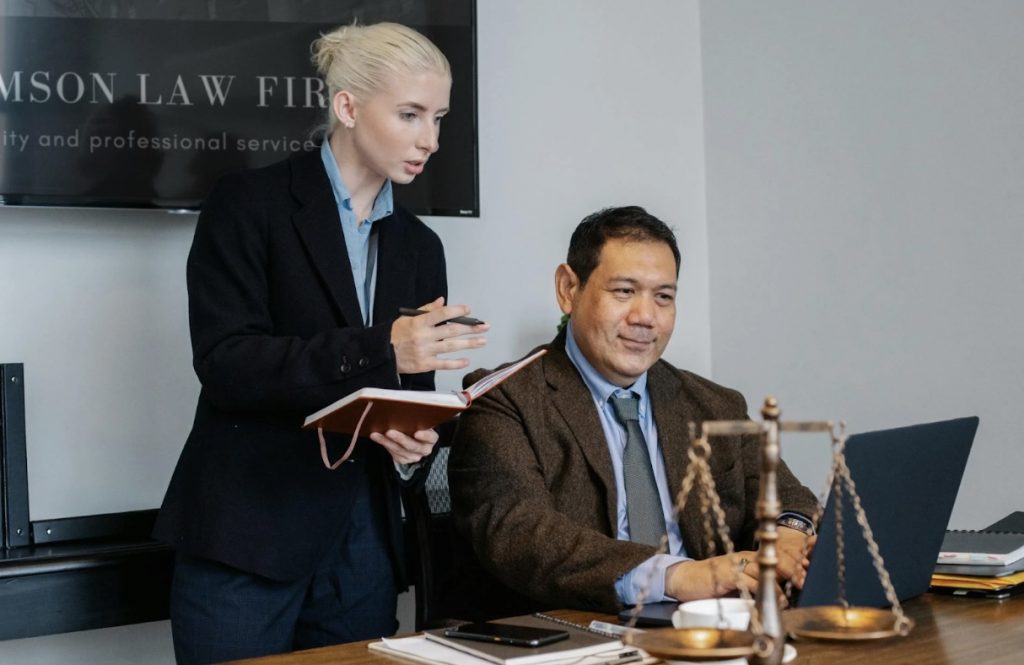In personal injury cases, evidence serves as the foundation for proving liability, damages, and the extent of injuries. Without solid evidence, even the most straightforward claims can falter, leading to reduced settlements or outright dismissal. Whether you’re dealing with a car accident, a slip-and-fall incident, or medical malpractice, presenting compelling and well-organized evidence is critical. For those seeking to secure rightful compensation, understanding the role of evidence can make all the difference.
1. Gathering Evidence at the Scene
One of the most vital steps in any personal injury case is collecting evidence at the scene of the incident. This evidence often includes photographs, videos, witness statements, and even physical objects related to the injury. When a person is injured in an accident, the immediate aftermath can be chaotic, but it’s important to gather as much information as possible. For example, photos of the scene can capture essential details such as road conditions, lighting, or visible hazards that could have contributed to the injury. Videos can provide a real-time account of events, offering insight that might otherwise be lost.
2. Medical Records and Documentation
The success of a personal injury case hinges heavily on medical records and related documentation. These records not only confirm the extent of your injuries but also help link those injuries to the incident in question. From emergency room visits to follow-up appointments with specialists, every medical interaction is crucial. Detailed notes from doctors, X-rays, MRIs, and test results can establish a direct connection between the injury and the event that caused it. Medical bills also play a significant role in calculating the damages in a personal injury case. Beyond proving the cost of treatment, they illustrate the financial burden that the injury has imposed on the victim.
3. Expert Testimony
In many personal injury cases, expert testimony is indispensable. While lay witnesses can describe the event, experts can provide insights into the cause of the injury, the extent of the damage, and the long-term impact. For example, in a medical malpractice case, an expert in the same field as the defendant may be called upon to determine whether the standard of care was met. Similarly, in a car accident case, accident reconstruction specialists can recreate the event to show how and why it occurred. For instance, the Malloy Law Offices, which specializes in personal injury cases, frequently collaborates with experts to strengthen their clients’ cases. These experts may range from medical professionals to forensic specialists, depending on the type of injury involved.
4. Documentation of Financial Losses
Beyond physical injuries, personal injury cases often involve significant financial losses. This may include lost wages, decreased earning potential, and other expenses related to the injury. To build a strong case, it’s important to document these losses meticulously. Pay stubs, tax returns, and letters from employers can help prove how much income was lost due to time off work. In cases where the injury prevents the victim from returning to their previous job, vocational experts may be used to estimate the future loss of earnings. Receipts for out-of-pocket expenses such as medical equipment, transportation to and from appointments, and home modifications (such as ramps for wheelchair access) should also be preserved.
5. Surveillance and Social Media
Surveillance footage and social media activity have become increasingly important in personal injury cases. Surveillance videos, whether from traffic cameras, security systems, or nearby businesses, can capture the moment of the incident, providing undeniable proof of how the event unfolded. In some cases, insurance companies or opposing counsel may even conduct their own surveillance to gather evidence that contradicts a victim’s claims. For instance, if someone claims a debilitating back injury but is later seen engaging in strenuous activity, it can seriously undermine their case. Similarly, social media posts can either help or hurt a personal injury case. Photos, comments, or videos shared on platforms like Facebook, Instagram, or Twitter can be used to contradict claims of injury or suffering.
6. Presenting the Evidence in Court
Collecting evidence is only part of the equation—presenting it effectively in court is equally crucial. The way evidence is organized, displayed, and explained can impact how it is perceived by the jury or judge. Attorneys often use visual aids such as charts, diagrams, and timelines to help laypeople understand the details of the case. For example, in a medical malpractice case, a timeline showing the patient’s treatment and subsequent decline can highlight where mistakes occurred. In some cases, attorneys may also bring physical evidence into the courtroom, such as the broken product or defective item that caused the injury. The goal is to make the evidence as compelling and accessible as possible. It’s the responsibility of the legal team to ensure that all evidence is admissible and presented in a manner that strengthens the overall argument.

In personal injury cases, evidence is the cornerstone of a successful outcome. From gathering information at the scene to organizing medical records and expert testimony, every piece of evidence contributes to the strength of a case. Proper documentation of financial losses, careful consideration of social media, and a strong courtroom presentation can all make a significant difference in the final verdict or settlement. Understanding the role of evidence in building a strong case can help victims secure the compensation they deserve, ensuring that justice is served.


0 Comments